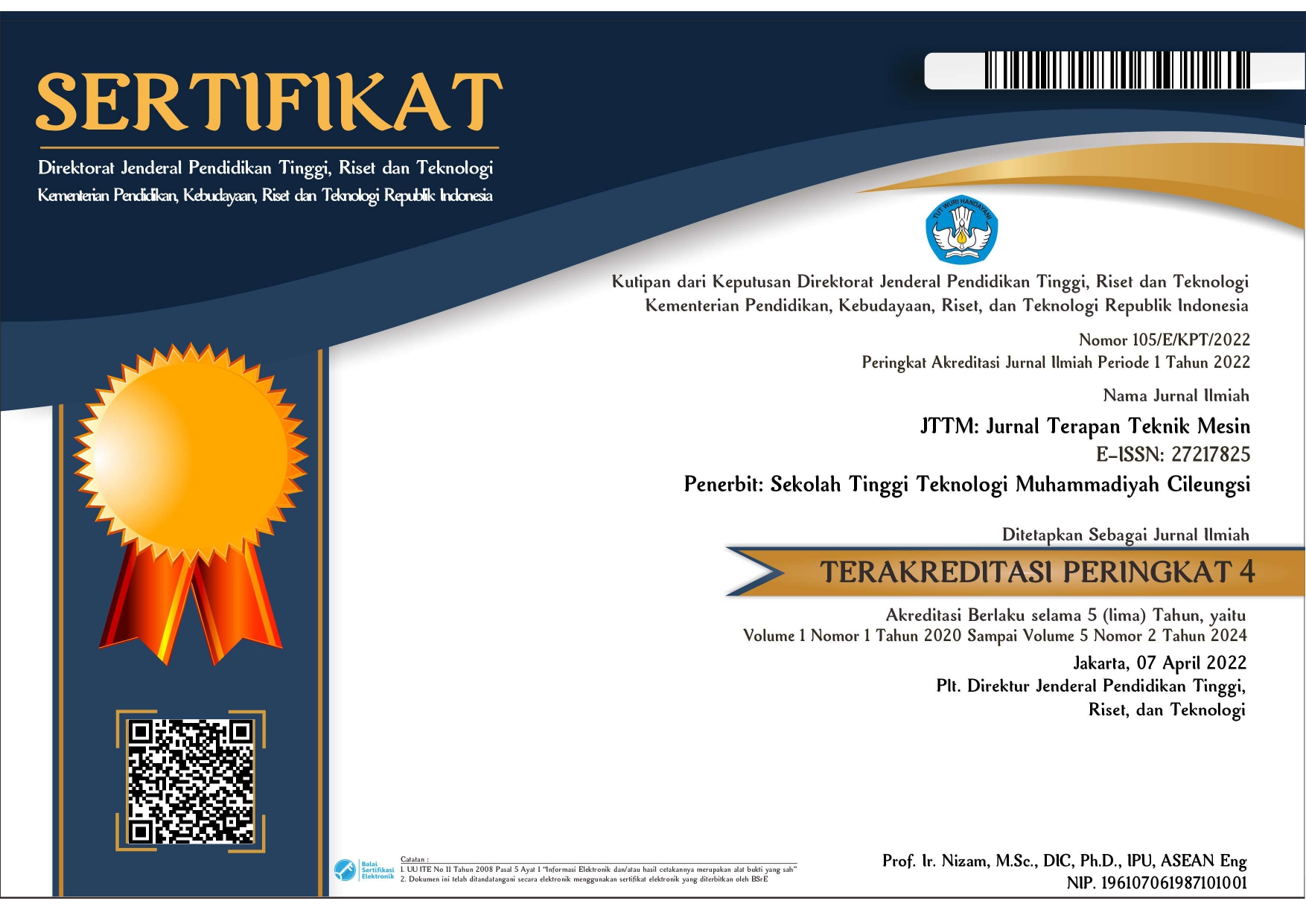Analysis of material incision in milling machine against workpiece by vibration method
Abstract
The Frais Machine is a piece of equipment used in manufacturing. To reach the specified production capacity, the machining process' time requirements must be more effectively managed. The goal of this study is to use the Fast Fourier Transform (FFT) technique to ascertain how changes in workpiece and spindle speed affect vibration. The milling machine utilized in this investigation is the Lushan Model ZX32, and the measuring device is a vibration analyzer coupled to an accelerometer sensor. Sengon Wood, PVC, and Aluminum 5052 are the workpiece varieties used. At spindle speeds of 95 and 150 rpm, the study's findings on aluminum material produced Y axis personal frequencies of 118 Hz with an amplitude of 15.12 mm/s2 and 144 Hz with an amplitude of 9.657 mm/s2. While PVC produced personal frequencies on the Y axis of 71 Hz with amplitudes of 12.11 mm/s2 and 40 Hz with amplitudes of 7.025 mm/s2 at spindle speeds of 95 and 150 rpm. Personal frequencies at 118 Hz with an amplitude of 10.9 mm/s2 and 74 Hz with an amplitude of 7.97 mm/s2 in the X axis are seen in wood materials with spindle speeds of 95 and 150 rpm. The findings demonstrate that differences in spindle rotation and workpiece have an impact on vibration; smaller vibrations are produced at higher rotation rates. Additionally, differences in the workpiece can impact tool life
Copyright (c) 2023 Kurtusi Muhamad, Subekti Subekti

This work is licensed under a Creative Commons Attribution-NonCommercial 4.0 International License.











